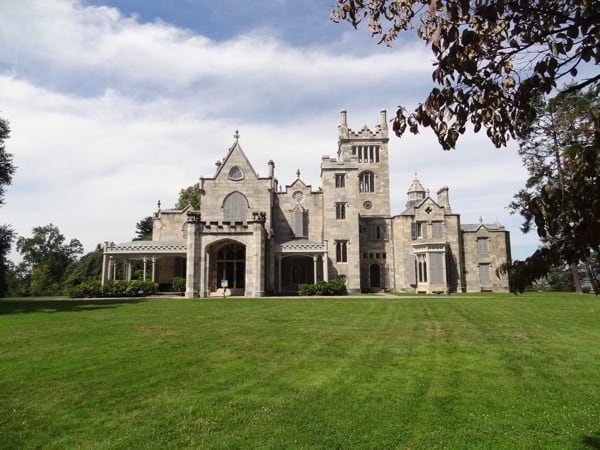If you’re a fan of shows like Downton Abbey, you may wonder how all those American heiresses (like Cora Crawley, née Levinson) got their heaps of cash. In many cases, the short answer is that their relatives invented or invested in something that a booming 19th-century country like the U.S.A. needed—canals, railroads, banks, mines, factories and the like.
The men who succeeded spectacularly well at this—often by dubious means—earned the nickname “robber barons.” That likely didn’t bother them one whit. They took their piles of money and promptly built giant city mansions and equally ostentatious country homes.
Today, many of those Gilded Age country retreats line the Hudson River north of New York City. One of my favourites is Lyndhurst in Tarrytown, just an hour from Manhattan.
Unlike some of the other 19th-century architectural confections dotting the landscape in this still-moneyed neck of the woods, Lyndhurst actually feels like a home, despite its massive scale.
Perhaps that’s because it started as a pretty but somewhat less grand home in 1838, when former New York City mayor William Paulding hired architect Alexander Jackson Davis to design a Gothic Revival retreat. A quarter century later, subsequent owner George Merritt (a rich Manhattan merchant) hired Davis again to double the size of the house.
Perhaps the home’s most colourful owner was Jay Gould, who earned his millions running railroads and telegraph companies. He also, um, sparked an 1869 financial panic known as Black Friday by attempting to corner the gold market.
Gould liked to kick back at Lyndhurst with his wife and six kids, who must have loved the bowling alley he added in 1895.
The building is more like a church or a castle than the modern conception of a summer home; there’s lots of grey stone (and plaster painted to look like stone), vaulted ceilings, pointy archways and narrow corridors. But, weirdly, it works, perhaps due to the unified effect created by the custom-made furniture that Davis also designed. Like many visitors, I’m particularly fond of the large, bright art gallery, which wasn’t as sunny in Gould’s day—he put shutters over the huge window and hung some of his expensive paintings on them.
Perhaps the display of wealth worked; one of Gould’s daughters, Anna, went on to marry a European count, divorce him, then marry a duke. After she died in 1961, the house went to the National Trust for Historic Preservation.
You can explore the park-like grounds for free any day of the week from dawn until 5pm. There’s a lovely view of the Hudson River and the Tappan Zee Bridge from the back of the property. To see inside the house, you have to take a one-hour guided tour, available on Fridays, Saturdays and Sundays.
If you go
Distance from Ottawa: 699km
Tickets: From $7 to $14 per person
More information: Lyndhurst National Trust Historic Site


1 comment
[…] designed by Alexander Jackson Davis. He’s the 19th-century architect I waxed on about in a post about Lyndhurst, one of my other fave places in the Hudson Valley.) If self-actualization is your bag, […]